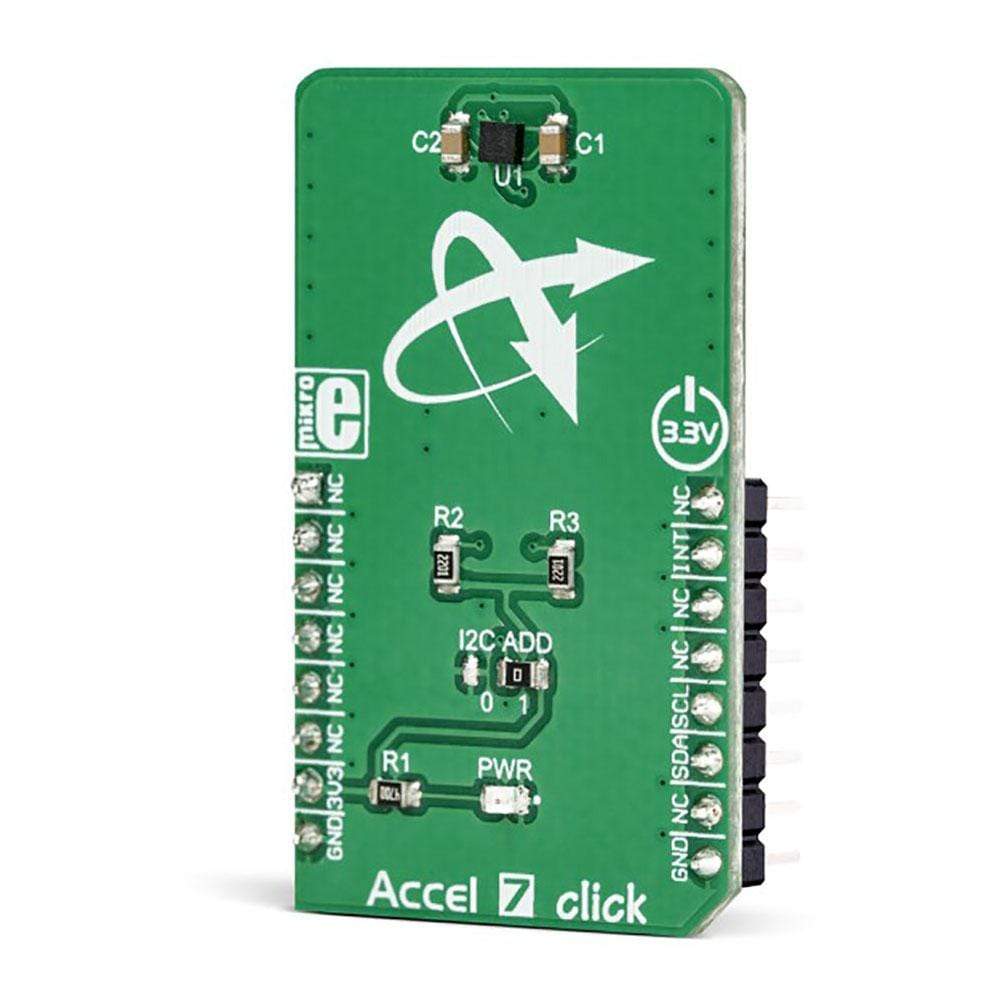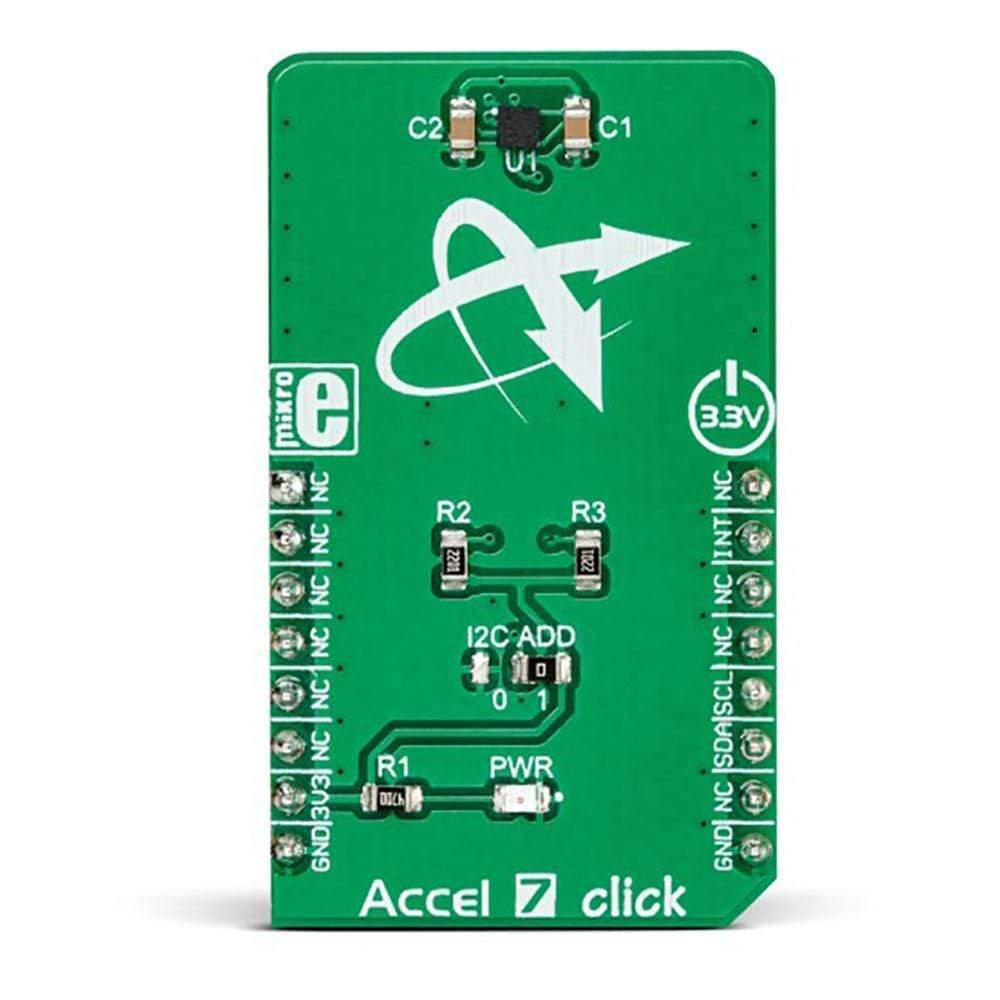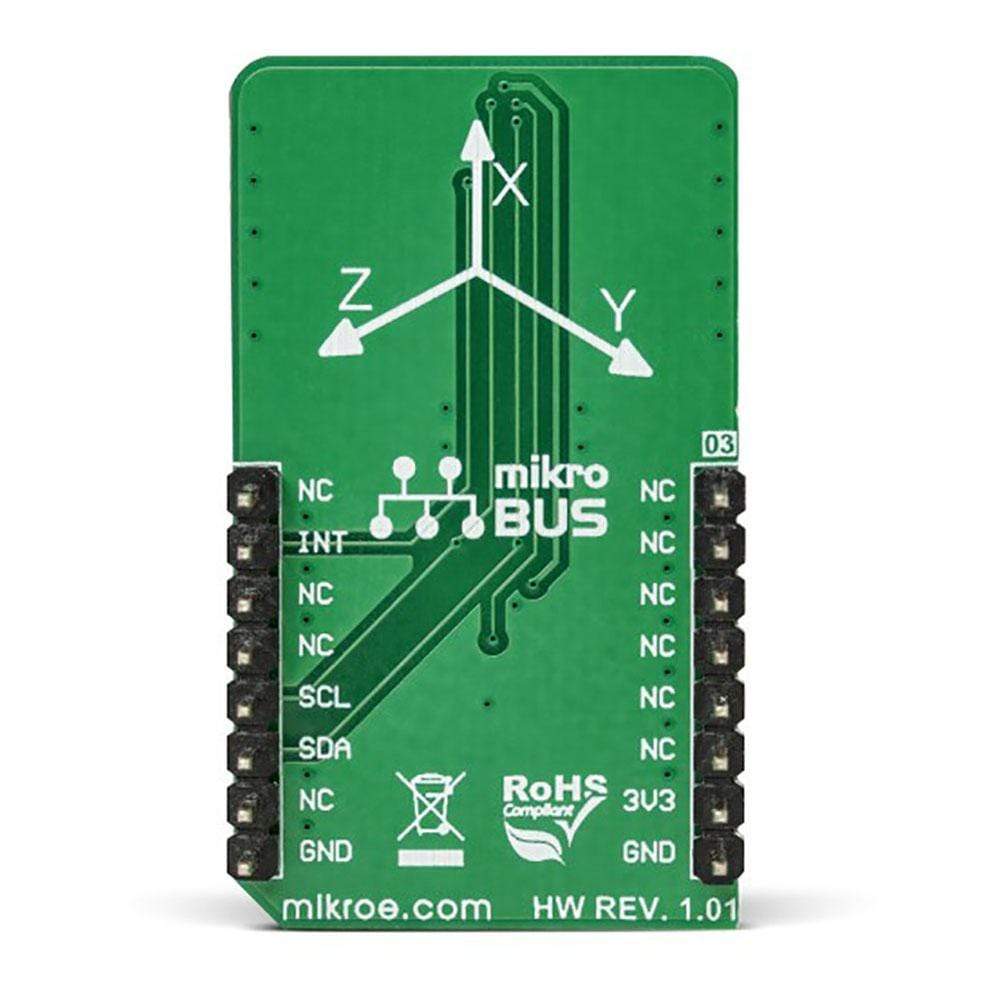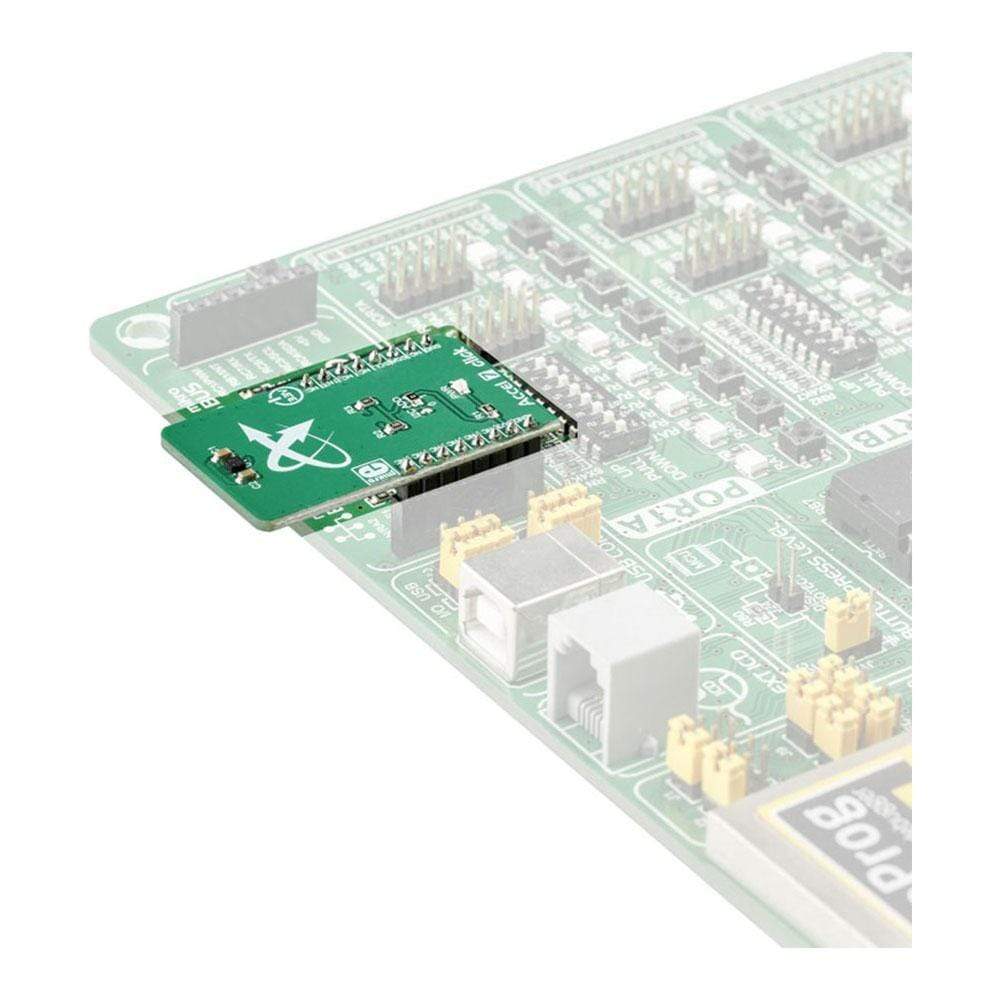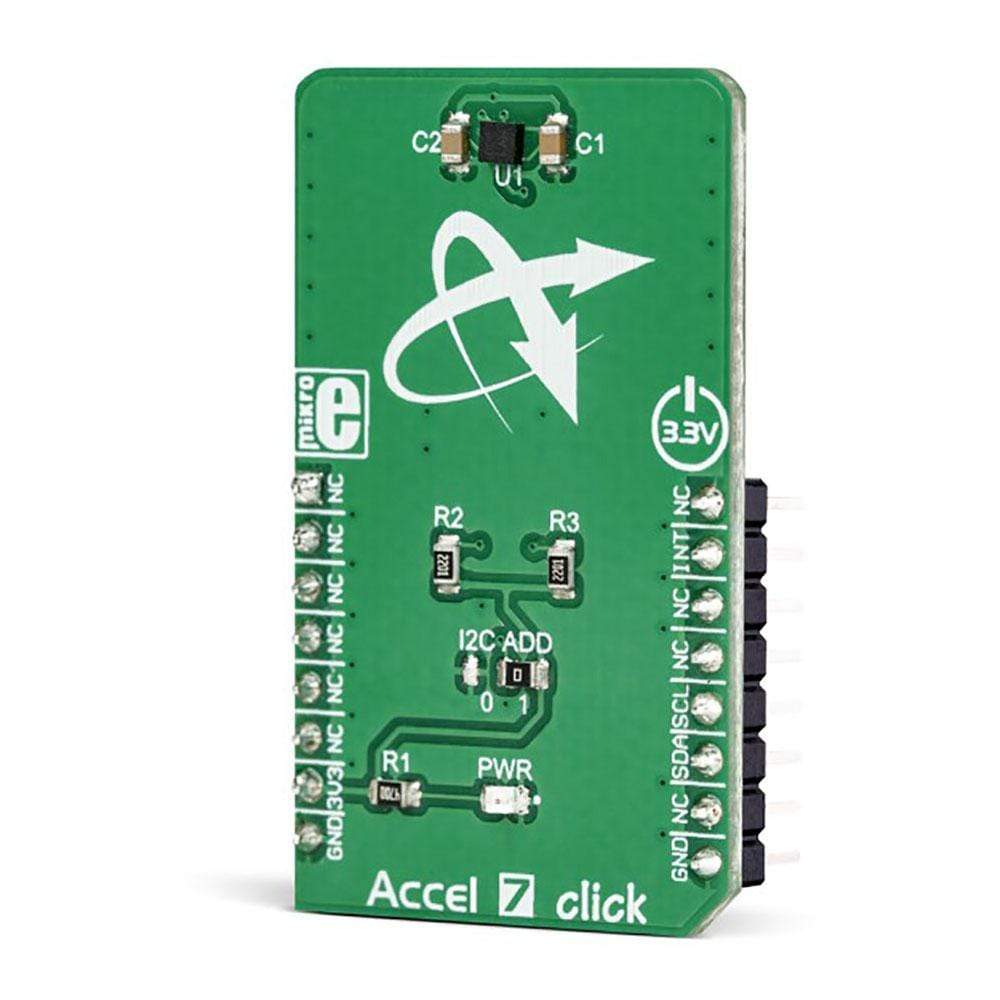
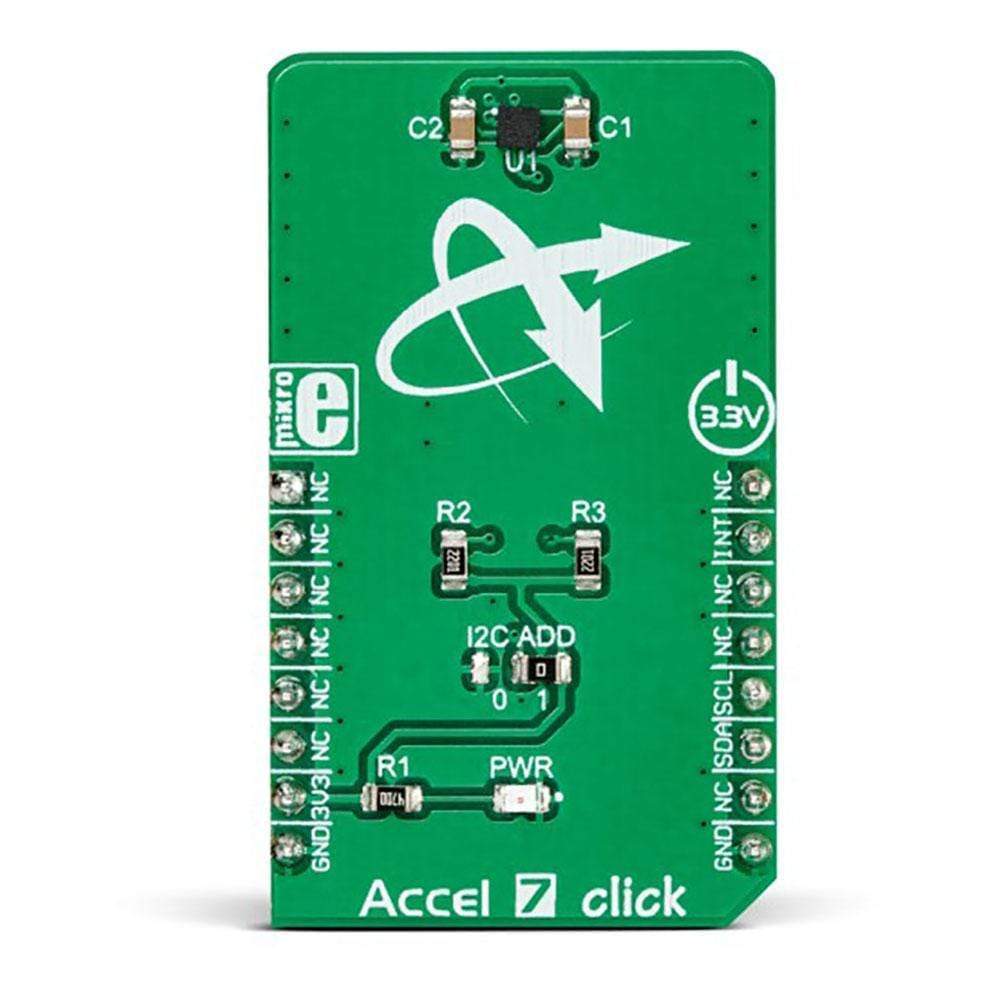
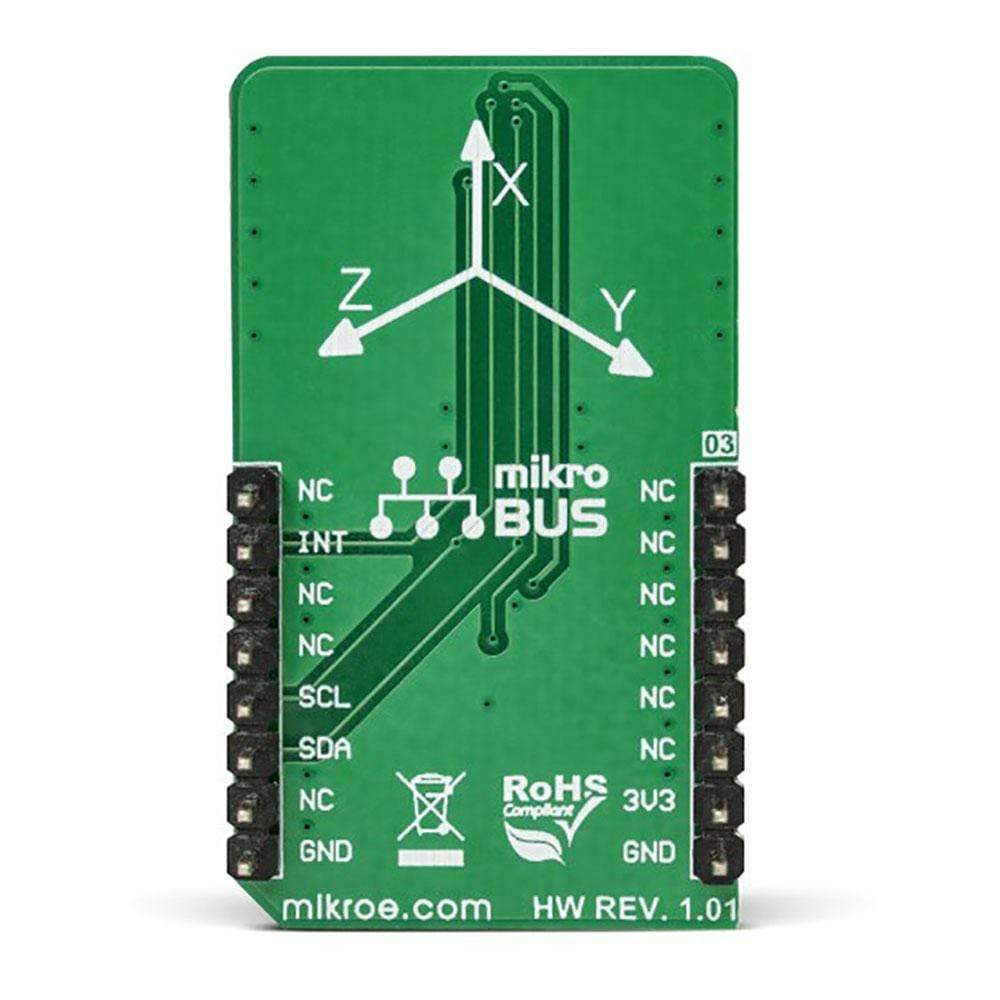
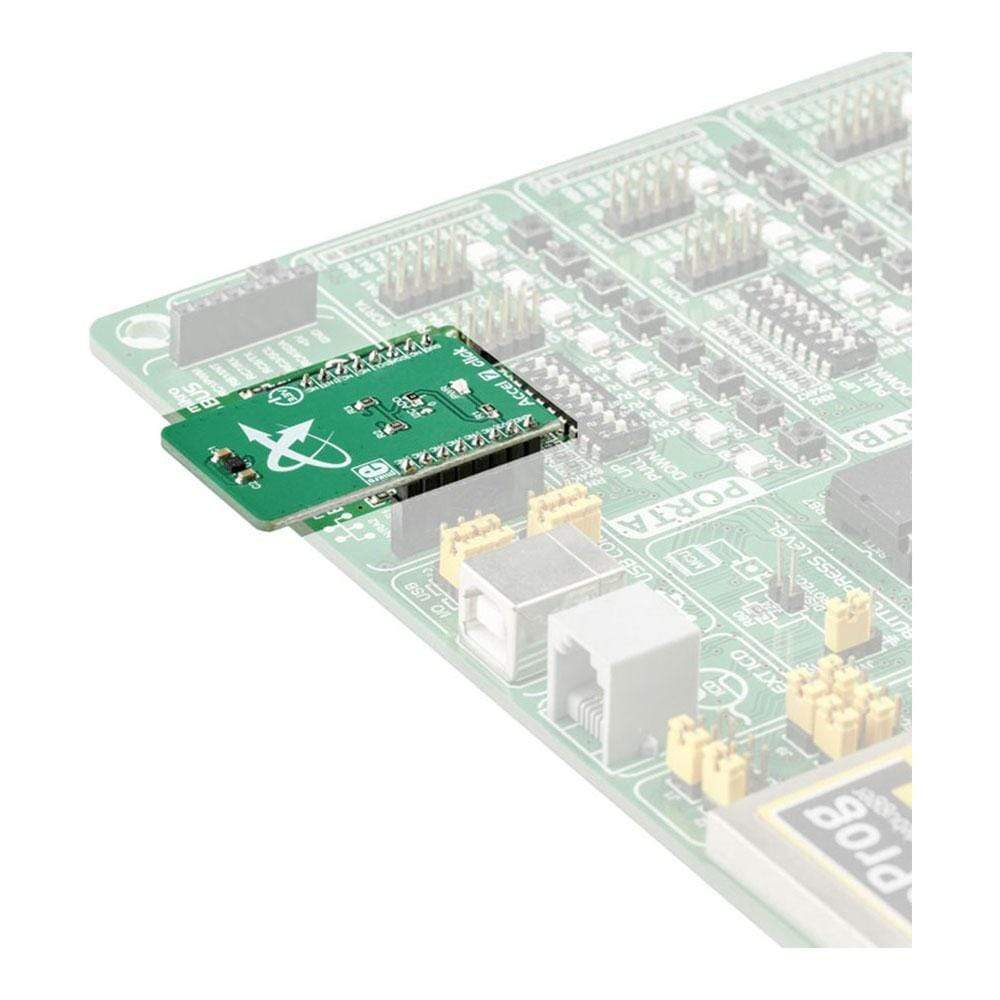
Overview
The Accel 7 Click Board™ is a tri-axis acceleration sensing Click Board™ powered by the KXTJ3-1057 14-bit tri-axis digital accelerometer from Kionix. This sensor was developed using proprietary Kionix micro-machining technology, resulting in high accuracy and excellent noise immunity. The Accel 7 Click Board™ supports a wide range of applications that require low power consumption, fast response, precision, and reliability. As such it can be used for motion detection, display orientation, HID applications, drop detection applications (for warranty logging), and similar applications that rely on acceleration and motion-sensing.
It comes in a package that also includes the mikroSDK software and a library with all the functions. The Accel 7 Click Board™ comes as a fully tested and approved prototype, making it a reliable device ready to use on the development board.
Downloads
Das Accel 7 Click Board™ ist ein Click Board™ mit dreiachsiger Beschleunigungsmessung, das vom digitalen 14-Bit-Beschleunigungsmesser KXTJ3-1057 von Kionix angetrieben wird. Dieser Sensor wurde mithilfe der proprietären Mikrobearbeitungstechnologie von Kionix entwickelt, was zu hoher Genauigkeit und ausgezeichneter Störfestigkeit führt. Das Accel 7 Click Board™ unterstützt eine Vielzahl von Anwendungen, die einen niedrigen Stromverbrauch, schnelle Reaktion, Präzision und Zuverlässigkeit erfordern. Daher kann es für Bewegungserkennung, Displayausrichtung, HID-Anwendungen, Fallerkennungsanwendungen (für Garantieprotokollierung) und ähnliche Anwendungen verwendet werden, die auf Beschleunigung und Bewegungserkennung angewiesen sind.
Es wird in einem Paket geliefert, das auch die MikroSDK-Software und eine Bibliothek mit allen Funktionen enthält. Das Accel 7 Click Board™ wird als vollständig getesteter und zugelassener Prototyp geliefert und ist somit ein zuverlässiges Gerät, das sofort auf der Entwicklungsplatine verwendet werden kann.
| General Information | |
|---|---|
Part Number (SKU) |
MIKROE-3244
|
Manufacturer |
|
| Physical and Mechanical | |
Weight |
0.019 kg
|
| Other | |
Country of Origin |
|
HS Code Customs Tariff code
|
|
EAN |
8606018713899
|
Warranty |
|
Frequently Asked Questions
Have a Question?
Be the first to ask a question about this.

